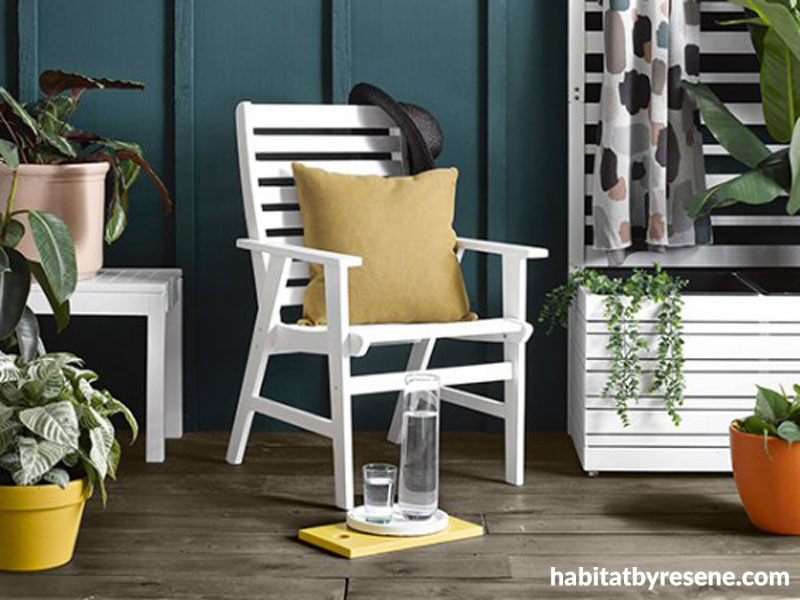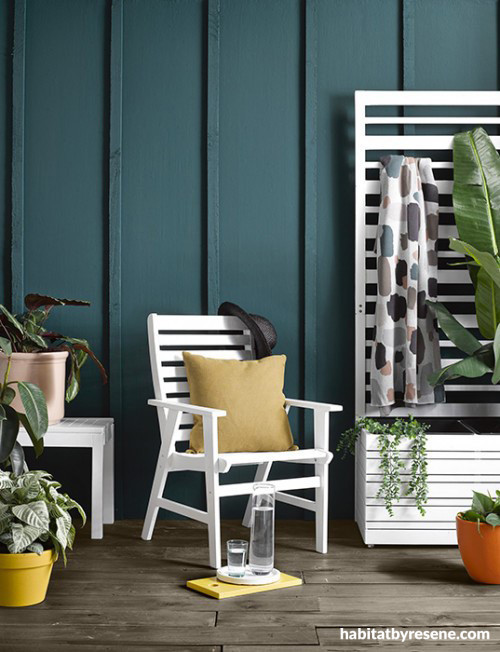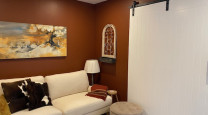
Hot tips for painting in summer
25 Nov 2021
We ask a lot of exterior paint. It has to stand up to sunlight and ultraviolet (U.V.) radiation, water and moisture, and temperature changes. Higher quality exterior paints from Resene including Resene Lumbersider low sheen and Resene Sonyx 101 semi-gloss are designed to deal with the effects of each of these conditions.
When it comes to applying paint – the conditions also matter. The predictions are for another La Niña summer – that means warmer than average and wetter too.
The washing line rule – what are the ideal conditions for painting.
Once you’re ready to paint, it’s worth ensuring that there will be no weather interruptions. As a basic rule: is the washing on the line drying? If it’s not, neither will your paint. Ideal conditions are 15-20°C, humidity at 70-80% and a very gentle breeze to dry the paint.
Conditions check list:
- If water spilt on a concrete path doesn’t dry out, leave your painting until it does.
- If a thin coat of water applied to the substrate has not evaporated in 15 minutes, leave your painting until it does.
- A light breeze is ideal for drying your paint. If it’s too windy, your paint will dry too fast which might result in a patchy paint job, so move operations to a more sheltered side of the building.
- Don’t paint in direct sunlight or in extremely hot weather. If you’re pushed, paint the shady side of the building or wait until the temperature drops. Start ahead of the sun and work your way around the building keeping ahead of the sun as you go.
- Cloudy or overcast conditions are ideal for painting – just ensure rain is not expected.
- As a general rule apply waterborne paints at temperatures above 10°C and solventborne and industrial paints when the temperature is at least 5°C above the dew point. The lower the temperature the longer the paint will take to dry.
- Read the label on your paint container. If you follow its recommendations, you’ll reap the full benefit of the protective capabilities and finish of your paint

Resene CoolColour is the ideal choice for painting or staining dark colours outside due to its heat reflective qualities. Board and batten exterior in Resene Atlas, deck in Resene Woodsman Iroko, deck furniture in Resene Alabaster and pots in Resene Rascal, Resene Celebrate and Resene Ayers Rock. Project Amber Armitage, image Melanie Jenkins.
How the sun can affect paint
Waterborne paints such as Resene Lumbersider and Resene Sonyx 101 are more resistant to direct UV light than solventborne paints. This is because the paint binders in waterborne paints tend to be ‘transparent’ to U.V. radiation, while solventborne binders actually absorb the radiation, which breaks them down.
If you are planning to paint a dark colour and your home is already too hot in summer, consider choosing a Resene CoolColour. A Resene CoolColour is designed to reflect much more of the sun’s energy than a standard colour reducing heat build-up and protecting weatherboards and other substrates.
Top tip: Some paint colours, such as bright organic reds and yellows, are more vulnerable to fading caused by U.V. radiation. For these colours, apply Resene Clearcoat UVS with U.V. inhibitors over the paint colour to help the colours last longer.
Painting in hot weather
In very hot conditions water will evaporate from the paint and the paint thicken and become difficult to apply. It will be difficult to keep a wet edge and your paint result may become patchy.
To help overcome this, add Resene Hot Weather Additive, which can slow down the drying and give a longer wet edge. And if the surface is porous, it can be pre-wetted with water before the application of waterborne paints.
Wet weather
Waterborne paints are ‘breathable’ and allow water to vaporise and escape. This will help prevent paint from cracking and flaking when wet timber expands when exposed to water or contracts when drying. Use high quality paints like Resene Lumbersider and Resene Sonyx 101 on weatherboards.
If damp conditions are a constant problem, clean your house with Resene Moss & Mould Killer before painting to treat any moss and mould, and consider asking for Resene MoulDefender, a mould inhibitor to be added to your paint for extra protection.
What about humidity?
Humidity makes a difference too. If the air is too humid the water cannot evaporate and paint takes longer to dry. Too low a humidity factor means rapid loss of water… and that can mean particles in the film won’t have time to arrange themselves properly. However, extreme conditions are pretty rare in temperate New Zealand. The biggest concern is likely to be rain, and for obvious reasons – avoid painting in rain! When it comes to interior painting the same rules around temperature and humidity apply though of course everything is far more controlled indoors.
If the weather is a little changeable and light showers may affect your paint, add Resene Umbrella Additive to your paint. This will help the paint cure quicker and resist washing off in light showers.
Published: 25 Nov 2021








